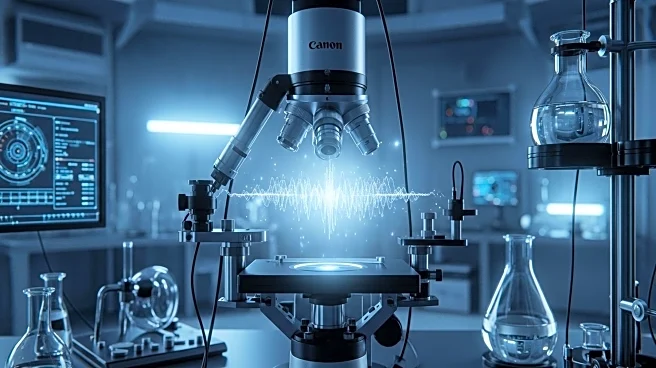What's Happening?
Researchers at Michigan State University have developed a method using fast lasers to manipulate atoms in a material called tungsten ditelluride (WTe2), potentially leading to advancements in electronic devices. The team, led by Tyler Cocker and Jose L. Mendoza-Cortes, combined experimental and theoretical quantum mechanics to explore new electronic properties of materials. By using terahertz pulses of light, they were able to alter the alignment of atoms in WTe2, creating a nanoscale switch that changes the material's electrical properties. This discovery could pave the way for smaller, faster, and more energy-efficient electronics.
Why It's Important?
The research holds significant implications for the future of electronic devices, such as smartphones and computers. By enabling materials to exhibit new electronic properties, the study suggests potential reductions in size and cost, along with improvements in speed and energy efficiency. This could benefit consumers and manufacturers by providing more advanced technology at lower costs. The collaboration between experimental and theoretical approaches also highlights the importance of interdisciplinary research in driving technological innovation.
What's Next?
The researchers aim to further explore the technological applications of their findings, potentially leading to the development of new materials for electronic devices. Continued collaboration between experimental and theoretical research teams may yield additional insights into the behavior of materials at the atomic level, influencing future advancements in electronics.










